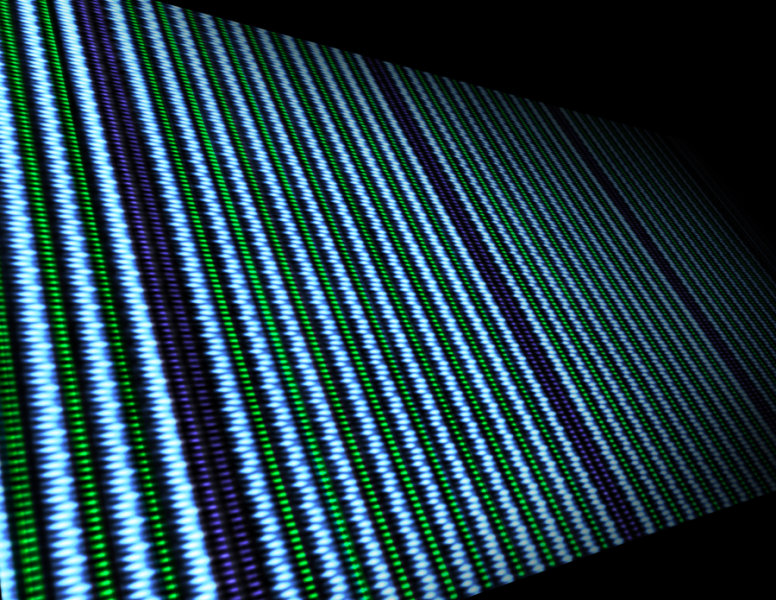"Atomic sandwiches" can reduce the power consumption of computers by 100 times

Scientists from the Lawrence Berkeley National Laboratory and Cornell University have developed a new multiferroic, a material that combines both magnetic and electrical properties. With it, in the future it will be possible to create a new generation of devices with more computing power and less power consumption.
Multiferroics are materials that exhibit at least two of the three properties: ferromagnetism (the property of iron in magnetization to maintain this state), ferroelectricity (the occurrence of spontaneous dipole moment) or ferroelasticity (spontaneous deformation). Researchers in their work successfully connected ferromagnetic and ferroelectric materials so that their location could be controlled using an electric field at a temperature close to room temperature.
')

The authors of the study designed hexagonal atomic films of lutetium iron oxide (LuFeO3). The material has pronounced ferroelectric and magnetic properties. It consists of alternating monolayers of lutetium oxide and iron oxide. To create an “atomic sandwich”, scientists turned to molecular beam epitaxy technology. She allowed to collect two different materials in one, atom by atom, layer by layer. During assembly, it was found that if one additional layer of iron oxide was introduced after every ten of such alternations, it was possible to completely change the material properties and obtain a pronounced magnetic effect. In their work, they used a 5-volt sensor from an atomic-force microscope to switch the polarization of ferroelectrics up and down, creating a geometric pattern of concentric squares.
Laboratory tests have shown that magnetic and electrical atoms can be monitored using an electric field. The experiment was carried out at a temperature of 200-300 Kelvin (-73 - 26 degrees Celsius). All previous developments worked only at lower temperatures. Multiferroik, created jointly by the Lawrence Berkeley Laboratory and Cornell University, is the first material that can be controlled at a temperature close to room temperature. “Together with our new material, only four are now known, which exhibit multiferroic properties at room temperature. But only in one of them the magnetic polarization can be controlled using an electric field, ”notes Darrell Schlom, a professor at Cornell University, who is one of the main participants in the study. This achievement can later be used to create low-power microprocessors, data storage devices and new-generation electronics.
In the near future, scientists plan to explore the possibilities of reducing the voltage threshold, which is necessary to change the direction of polarization. To do this, they are going to conduct experiments with different substrates to create new materials. “We want to show that the multiferroic will work at half a volt as well as at five,” notes Ramamurty Ramesh, deputy director of the Lawrence Berkeley National Laboratory. In addition, they expect to create an operating device based on multiferroic in the near future.
For Ramesh, this is not a first achievement. In 2003, he and his group successfully created a thin film of one of the most famous multiferroics — bismuth ferrite (BiFeO3). Dense masses of bismuth ferrite are an insulating material, and films that can be separated from it can conduct electricity at room temperature. Another major achievement in the field of creating multiferroics also refers to 2003. Then the team of Tokur Kemura discovered a new class of these materials, in which magnetism causes ferroelectric properties. It was these achievements that became the starting point for the main ideas in this field.
The realization that these materials have great potential for practical use led to the extremely rapid development of multiferroics. They require much less energy to read and write data than modern semiconductor devices. In addition, this data does not vanish after a power outage. These properties allow the design of devices that will be sufficiently short electrical impulses instead of the direct current required for modern devices. According to the creators of the new multiferroik, devices using this technology will consume 100 times less electricity.
Today, about 5% of global energy consumption comes from electronics. If in the near future serious achievements in this area are not achieved, which will lead to a decrease in energy consumption, this figure will grow to 40-50% by 2030 already. According to the US Energy Information Administration , in 2013, global electricity consumption was 157.581 TWh. In 2015, global consumption was stagnating due to lower growth in China and a downturn in the United States.
Source: https://habr.com/ru/post/398595/
All Articles